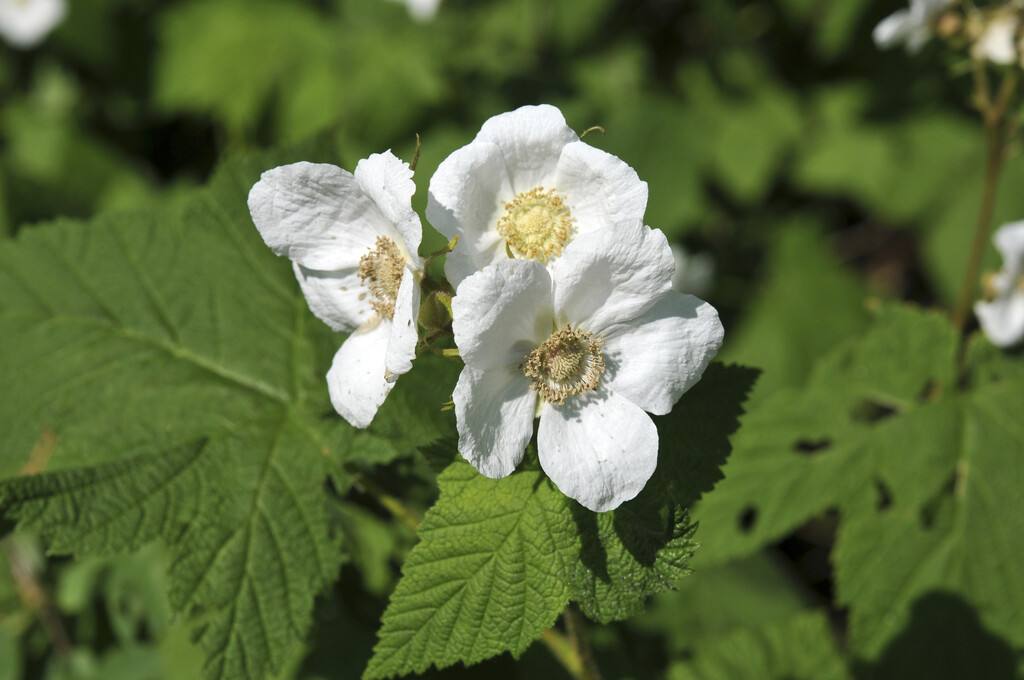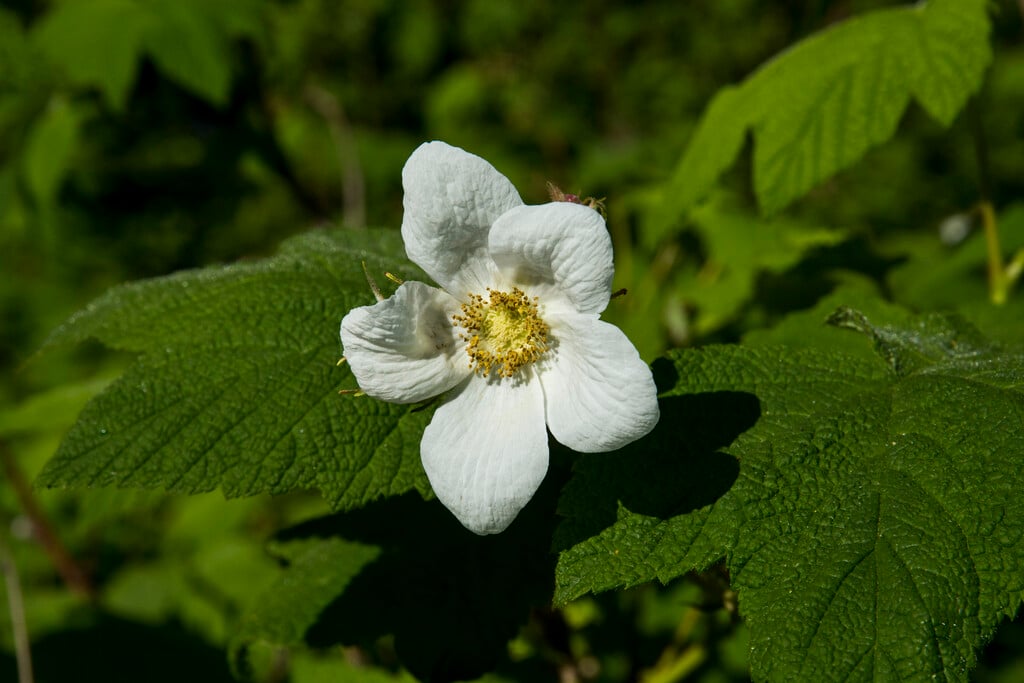Rubus parviflorus
thimbleberry
A deciduous, thicket-forming shrub with palmate, lobed mid-green leaves. Two-year old canes produce large white flowers in spring and summer, that are followed by edible, small red fruit, similar to raspberries
Size
Ultimate height
1.5–2.5 metresTime to ultimate height
2–5 yearsUltimate spread
1.5–2.5 metresGrowing conditions
Moisture
Moist but well–drainedpH
Acid, NeutralColour & scent
| Stem | Flower | Foliage | Fruit | |
| Spring | White | Green | ||
|---|---|---|---|---|
| Summer | White | Green | Red | |
| Autumn | Green | Red | ||
| Winter |
Position
- Full sun
- Partial shade
Aspect
East–facing or South–facing or West–facing
Exposure
Sheltered Hardiness
H7Botanical details
- Family
- Rosaceae
- Native to GB / Ireland
- No
- Foliage
- Deciduous
- Habit
- Suckering, Columnar upright
- Genus
Rubus can be deciduous or evergreen shrubs, often scrambling with bristly or prickly stems bearing simple, lobed, palmate or pinnate leaves and 5-petalled flowers followed by juicy, sometimes edible fruits
- Name status
Correct
- Plant range
- Western N America
How to grow
Cultivation
Grow in moisture-retentive, fertile soil, which is well-drained and weed free. For best results, plant in a sunny position. They will tolerate light shade, but may produce a smaller crop
Propagation
Lift healthy suckers that appear between the rows and replant in a new spot. You can also divide large clumps when dormant
Suggested planting locations and garden types
- Edible fruit
- Banks and slopes
Pruning
Cut back fruited canes to ground level soon after harvesting. Thin canes to prevent overcrowding
Pests
May be susceptible to aphids
Diseases
May be susceptible to grey moulds, raspberry cane spot, a fungal leaf spot, raspberry cane blight or a virus
Love gardening
Sign up to receive regular gardening tips, inspiration, offers and more
View our Privacy Policy
Get involved
The Royal Horticultural Society is the UK’s leading gardening charity. We aim to enrich everyone’s life through plants, and make the UK a greener and more beautiful place.

